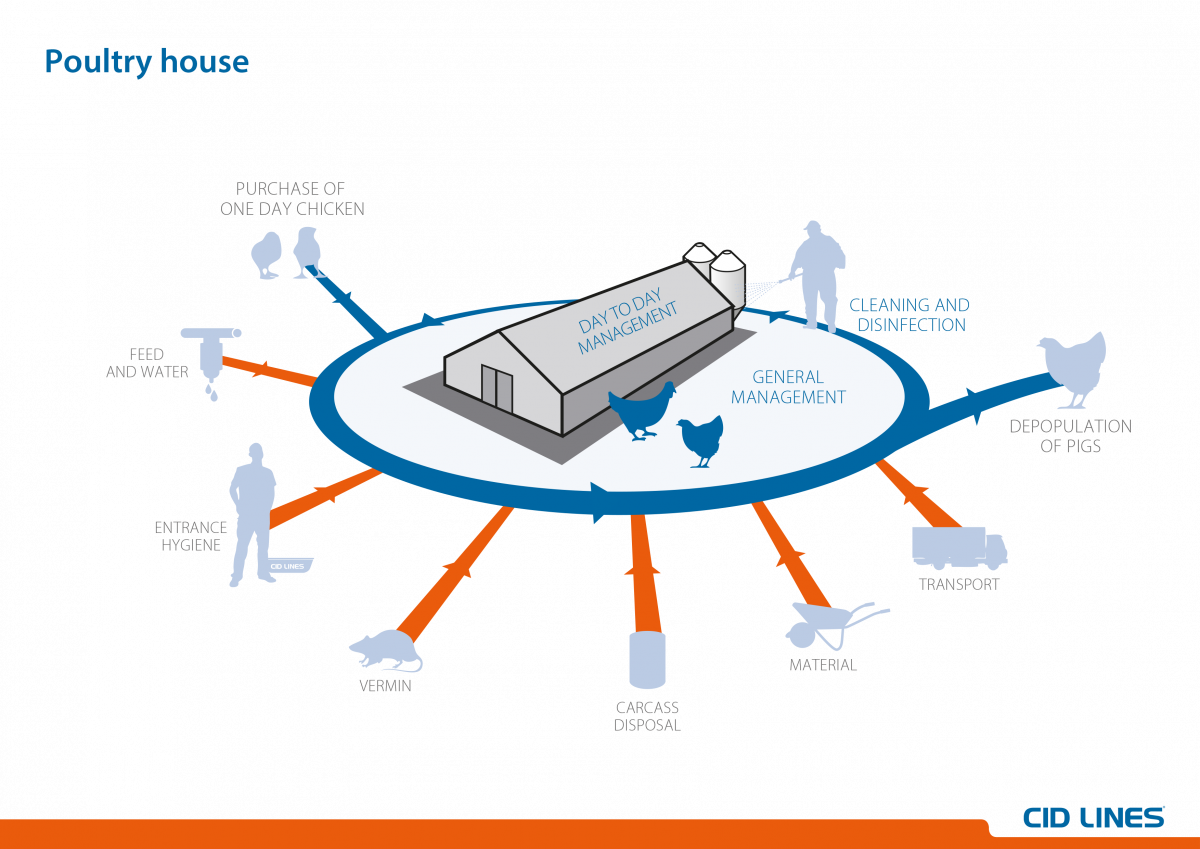
The first article was the introduction, this is the second article and this article will explain more about the general management on a poultry farm.

LOCATION OF THE FARM
Since many important pathogens can be transmitted by airborne transmission, the location is considered to be a critical point in the external biosecurity on the farm.
Keep in mind following aspects when choosing the location of a poultry farm:
-
Distance to nearby poultry farms: the type of poultry farm, the amount of animals present on the farm and the density of the animals in the neighboring poultry houses can play a crucial role in the introduction of infectious germs
-
Functions that the buildings have to fulfill
-
Working lines for the farmer, the animals and the transport vehicles
-
Possibilities for further expansion
-
Separated access roads for the living and farming zones
The orientation of the farm and the position of the access and exit roads should be chosen in such a way that any contact with the outside world is kept to a minimum. Physical protection from the outside can be achieved by putting a fence around the farm. In this way, the farm area and buildings can be closed when the poultry farmer is not on side.

MULTI AGE BROILER FARMS
Broiler farms can be exploited in two different ways: one age present on the farm at the same time or more ages present on the farm at the same time, both in floor systems or cage systems.
Animals of different ages may have different levels of sensitivity to certain pathogens. For that reason, it is critical to keep different age groups separate in order to avoid the transmission of pathogens to each other.
HOUSING SYSTEM
Because the broiler production industry has become very intensive over the past years, a good housing system is essential to keep the animals healthy.
Make sure
-
there is a good ventilation system
-
the temperature is adapted to the lifecycle of the broiler (in hot and warm climates)
-
there is enough space: please keep an eye on the animal density
-
that the litter is dry
-
there is enough feed and water available
ANIMAL WELFARE
Next to all the needs of a poultry to have a healthy and safe environment to live in, other things can surely contribute to a good animal welfare:
-
give the animals as less stress as possible
-
give the animals enough recreational materials to explore and play
-
provide the animals dietary fiber to make them calmer
-
….
We hope that you are interested in these articles, we explained now the basics about general management, next topic is about day-to-day management (article 3).